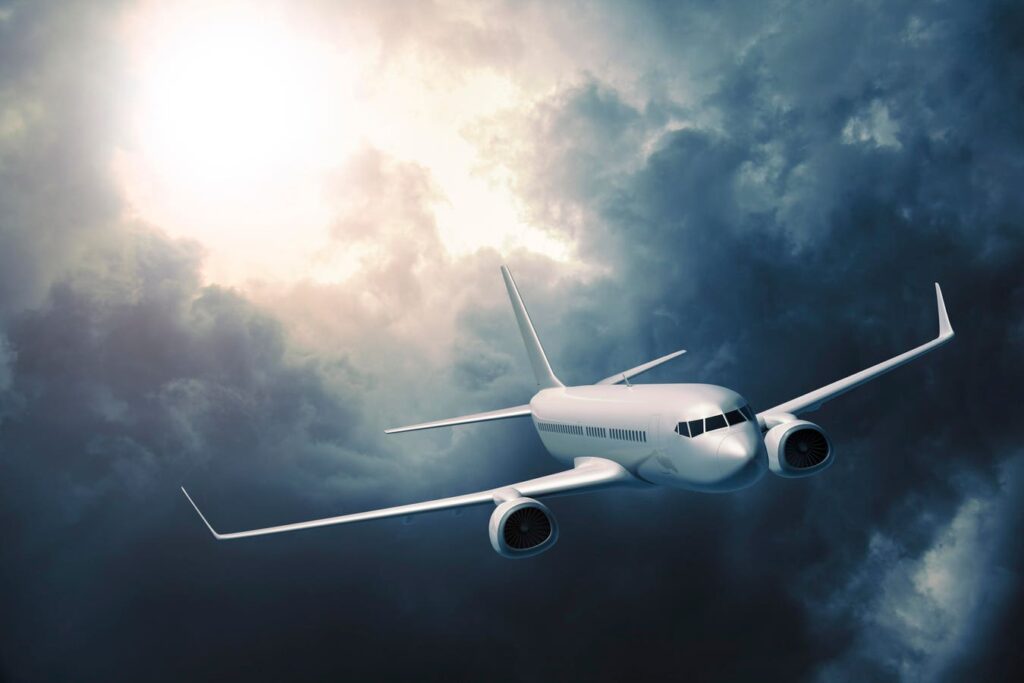Many suffer from a fear of flying but it can be conquered
gettyFlying can feel scary, particularly in light of recent incidents where passengers were injured during episodes of severe turbulence. There are ways though, to conquer a fear of flying, even when safety issues are a concern—and that’s a good thing, as turbulence is expected to increase in the decades to come.
Aerophobia, a fear of flying, affects around 20-25 million Americans, sometimes with severely debilitating outcomes. The reality is still that its far more dangerous to drive to the airport than it is to take a plane, and there were no fatalities in 2023 across any of the 37 million commercial airline flights taken, reports Bloomberg.
2024 has seen several incidents involving flight safety; a recent death onboard a Singapore Airlines flight after a passenger suffered a suspected heart attack during turbulence and 12 passengers injured during turbulence on a Qatar Airways plane heading for Dublin in May.
Turbulence is one worry for passengers uneasy in the air—clearly, safety is another, and it seems, people are feeling a little more uneasy. Google Trends reported that U.S. web searches for ‘flight safety’ in March 2024 were the highest they’ve been since October 2014.
Travel insurer VisitorsCoverage reports that in a recent poll, 74% of polled travelers have safety concerns flying, the majority reporting these concerns were linked to recent Boeing safety concerns.
All of this has been compounded by the knowledge that there is a shortage of air traffic controllers and a consequent increase in the number of near misses on runways over 2023.
What Is Turbulence And How Is It Caused?
To allay fears about flying, it helps to understand what turbulence is and its origins; turbulence is caused by a sudden change in airflow, sometimes coming from changes in the weather caused by nearby storms or because of the way air moves across mountain ranges or often due to jet streams. Turbulence is measured through four categories—light, moderate, severe or extreme.
Something called ‘clear air’ turbulence happens when warm and cool air collide, making the path for planes through it a little bumpy for passengers and this type of turbulence is harder for pilots to detect because it isn’t associated with visible weather patterns.
What’s important to remember is that while the plane can often seem to passengers as if it’s falling a long way down, pilots often only measure a drop of 10 or 20 feet, and it’s caused by air movements and not through any mechanical malfunction.
Turbulence rarely causes injuries to passengers traveling through it. Data from the Federal Aviation Industry shows that between 2009 and 2021 only 30 passengers and 116 crew members suffered serious injuries.
Climate Change Is Making Turbulence Worse
Paul Williams, a professor of atmospheric science at the University of Reading, told Bloomberg that severe clear air turbulence in the North Atlantic has increased by 55% since 1979.
Climate change appear to be having an impact on turbulence; a recent study in Geophysical Research found that it was already on the rise and experts predict that severe turbulence in jet streams might double or even triple in future decades, reports Bloomberg.
A 2023 NASA study reports that by 2050, clear air turbulence might increase anywhere from 10 to 40% making it more difficult for planes to cruise at current altitudes. While pilots could try to fly around the four main jet streams that circle our planet, it would make flights longer and they’d need more fuel.
What To Do About Your Flight Stress
There are lots of options that help people overcome a fear of flying. Airlines often run programs that can help. Turkish Airlines, for instance, offers a program to help people overcome their fears of flying by working with mental health professionals.
Or you could try a service that links nervous passengers directly to pilots just before a flight. For $50, Dial A Pilot provides a 15-minute phone call where pilots talk you through your fears, whether that’s to get on the plane or helping someone overcome a fear of turbulence and loud bangs (the latter might be lightning striking the aircraft, which they are designed to withstand).
Some people watch videos on TikTok explaining the ‘jelly theory’ to help overcome fear—that the plane is just like a rock suspended in jelly and despite being wobbled a lot in the air, it remains completely cocooned. Others read a blog on Medium called Admiral Cloudberg, where its author Kyra Dempsey analyses in minute details the events behind different plane crashes, showing that multiple things have to go wrong for anything bad to happen—the fact that this is so unlikely can help wary plane passengers rationalise the odds.
It can also help if stressed-out flyers get to the airport early, avoid caffeine and use podcasts that focus on calming flight nerves. Try following The Washington Post‘s 52 Definitive Rules For Flying, offering ways to make flights easier, less stressful and generally more pleasant for everyone onboard.
The main thing is to always listen to the pilot, follow instructions given by the flight crew, as well as to keep your seatbelt on at all times when seated.
Choose The Safest Seat On A Plane And The Routes With The Least Turbulence
CNTraveler reported in early 2024 on the ten most turbulent flight routes in the world in 2023. The top ten routes with the most turbulence were all short-haul flights, many in Japan and China—the worst being the route between Santiago in Chile and Santa Cruz in Bolivia. In Europe in 2023, the most turbulent flight routes in Europe were Milan to Geneva and Milan to Zurich. The long-haul flight route that consistently experiences the worst turbulence is the 3,600-mile route between Tokyo in Japan and Kathmandu in Nepal.
You can also pay attention to the safest seat on an airplane which might give you a little more confidence in the highly unlikely event that something does happen.
